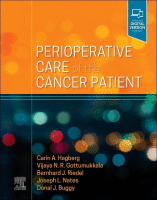Physical Address
304 North Cardinal St.
Dorchester Center, MA 02124

Applied Surgical, Pathologic, and Physiologic Concepts General The resection of tumors may cause large aesthetically and functionally unacceptable defects. Similarly, adjuvant therapies may leave functional tissue impairment or chronic nonhealing wounds requiring excision and reconstruction. Reconstructive surgery aims to obliterate…

Introduction Orthopedic oncology is one of the newest subspecialties in orthopedics that specializes in the management of musculoskeletal tumors, which are slowly increasing globally. The great variability of complexity and duration of oncologic orthopedic surgeries is such that there is…

Perioperative Care: Sarcoma Introduction Sarcoma is an umbrella term for malignant neoplasms of mesenchymal origin. A wide variety of underlying cell types can become neoplastic, and so these cancers are best understood by division into histologic subtype and anatomic location.…

Introduction Cytoreductive surgery (CRS) was initially described in the 1930s for patients with locally advanced gynecologic cancers, especially those with local and peritoneal spread, in an attempt to reduce symptoms arising from tumor burden. The subsequent extensive debulking surgeries developed…

General Introduction Surgical excision of endocrine tumors ranges from relatively common thyroid cancer surgery to rare conditions such as removal of pheochromocytoma and hypophysectomy for pituitary adenoma. A comprehensive evaluation of the perioperative management of all endocrine tumors is beyond…

Introduction According to the American Cancer Society (ACS), there will be >900,000 new all-cause cancer cases in American women by 2020, approximately a third of whom will die as a result. The most prevalent gynecologic cancers among women are ovarian…

Introduction Good perioperative planning, which begins at the time the decision is made to perform surgery and continues through the postoperative recovery phase after discharge, is crucial to achieving successful outcomes in urological cancer surgery. Improvements in surgical technology and…

Introduction Colorectal cancer is the third most commonly diagnosed cancer worldwide with an estimated 1.8 million new cases in 2018, but ranks second in terms of mortality (after lung cancer) with an estimated 881,000 associated deaths per annum. Approximately 50%…

Introduction The upper gastrointestinal (GI) tract comprises the mouth, esophagus, stomach, and duodenum. The incidence of such cancers is rising, and improved operative safety and successes of neoadjuvant chemotherapy have increased the number of patients who are candidates for curative…

Background In the United States breast cancer is the most commonly diagnosed cancer in women and accounts for over 260,000 new cases each year. A woman living in the United States has a 12% lifetime risk of being diagnosed with…